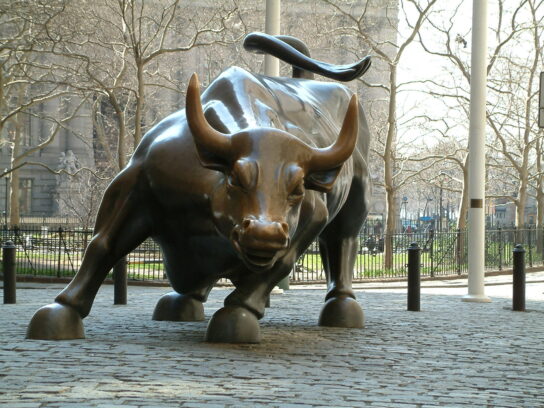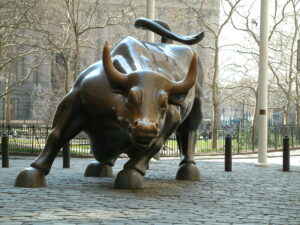
 With the stock market hovering near all-time highs, one would think investors are full of investing confidence. However, as has been the case since the financial crisis of 2008, the stock market’s recovery has been unloved. And in some ways, the skepticism towards the strength of stocks keeps pushing stocks higher. As Sir John Templeton famously said, “bull markets are born on pessimism, grow on skepticism, mature on optimism and die on euphoria.” Indeed, it has been skepticism and the absence of euphoria, as well as an accommodative Federal Reserve Bank, that has provided an underpinning for stock values.
With the stock market hovering near all-time highs, one would think investors are full of investing confidence. However, as has been the case since the financial crisis of 2008, the stock market’s recovery has been unloved. And in some ways, the skepticism towards the strength of stocks keeps pushing stocks higher. As Sir John Templeton famously said, “bull markets are born on pessimism, grow on skepticism, mature on optimism and die on euphoria.” Indeed, it has been skepticism and the absence of euphoria, as well as an accommodative Federal Reserve Bank, that has provided an underpinning for stock values.
This recent run has been incredible, and despite what has happened since the March 2020 lows, markets don’t move in only one direction. In the second half of 2021, the market will need a new catalyst to match the strong YTD result. We’ve rebounded from 2020’s low levels of U.S. Gross Domestic Product (GDP), and low corporate earnings, to massive spikes in GDP and earnings. But things will normalize and, while stocks can move higher, investors should manage expectations. Here are nine risks that might cause stocks to participate in a long-awaited correction.
Market Risks include:
- A change in tone from The Fed. In the fourth quarter of 2018 stocks declined almost 20% in about 90 days largely due to then new Federal Reserve Bank Chairman Powell’s comments and some monetary tightening. A similarly fast decline could follow if the Fed’s tone changes – although after several years on the job, Powell’s words are more measured.
- Higher taxes. The markets have been ignoring potential tax hikes on businesses and individuals. Specifically, a change to the capital gains rate could lead to pre-year end profit taking – and if a negative mood is present, any sell-off could be magnified.
- More regulations. The cost of new regulations isn’t immediately felt, but eventually they hurt profits and new investment.
- Increased M&A scrutiny. New White House guidance limiting mergers and acquisitions will have a higher bar for approval. This will narrow valuations – see the recent drop in Kansas City Southern (KSU) whose merger with Canadian National Railway is now in doubt.
- Slow growth in Europe and Japan. Aging populations in Europe and Japan are deflationary. Debt and structural inefficiencies continue to plague Europe. Japan’s hoped for Olympic boost didn’t materialize. These regions were in slow growth mode before Covid, and little has happened in the past 18 months to change that.
- High valuations. The stock market run-up has created high market multiples with the forward price earnings ratio of the S&P 500 north of 22. While low rates and strong earnings growth can justify some of this, it is above its historical market average which makes stock prices vulnerable to a correction.
- Covid-Shutdowns. Whether it is fear of Covid, restrictions on occupancy rates, or government mandated shutdowns, the specter of Covid remains an obstacle to optimism.
- A shift in sentiment and algorithmic trading. The machines and algorithms are powerful, and when the ‘risk-off’ sentiment returns, market moves could be accelerated. To be sure, an over-reaction can create opportunity for the savvy investor. But an emotional investor may think this is the ‘big one’ and sell which can fuel activity to the downside.
- Unknown global events. We’ve had relative stability around the globe which is unlikely to be a permanent condition. For example, the past few weeks saw a significant drop in Chinese stocks because of comments made by the Chinese regulators. This sharp and quick downturn is a small reminder of how billions in stock market value can be lost very quickly.
Despite these risks, the bullish case is that liquidity is massive and not going away. The Fed continues to focus more on employment than inflation. Congress will spend on infrastructure, earnings will grow (albeit at a slower rate than this most recent quarter’s historical performance), and innovation is improving productivity. Money has to go somewhere and with bond yields low, investors have little choice but to turn to stocks. I don’t discount this long-running bullish case – provided Jerome Powerful continues to have the stock market’s back. Nonetheless, investors might be wise to pause before putting new money to work, and instead look for a more favorable entry point.
Mark Avallone is the author of Countdown To Financial Freedom, and founder and President of Potomac Wealth Advisors, LLC a financial advisory firm serving clients through holistic financial planning and wealth management. Avallone writes on a variety of financial topics, and his contributions have appeared in the Wall Street Journal as well as in Forbes where he is a regular contributor. He is a frequent guest on CNBC, the Fox Business Network, and local NBC, CBS, and Fox affiliates in Washington, DC. His insights have also been published in USA Today, U.S. News & World Report, The Washington Post, and other leading publications.
Securities and Investment Advisory Services offered through H. Beck, Inc. Member FINRA, SIPC 2440 Research Boulevard, Suite 500 Rockville, Maryland 20850 301.944.5900. Mark Avallone is a registered representative and an investment advisor representative of H. Beck, Inc., which is unaffiliated with Potomac Wealth Advisors, LLC.



Comments are closed.